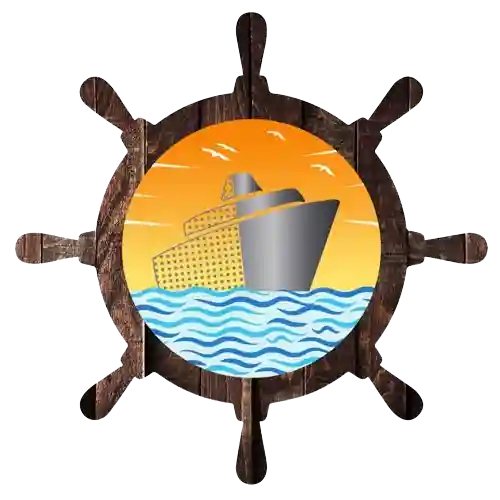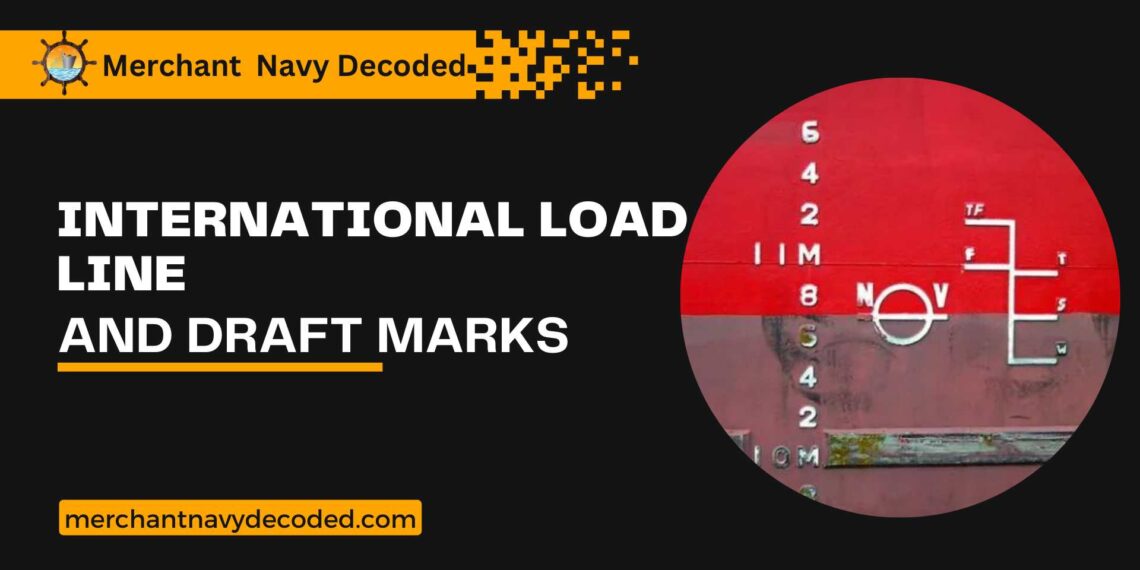Ship Load Line and Draft Marks
1. Introduction:
Samuel Plimsoll (1824 – 1898) an English politician and social reformer, devised the Plimsoll line/load line (a line on a ship’s hull indicating the maximum safe draught, and therefore the minimum freeboard for the vessel in various operating conditions).
When merchants began to transport goods by sea, they soon realized the importance of loading their ships correctly. In the 19th century, overloading and poor repair made some ships so dangerous that they became known as ‘coffin ships’. This wrecking of ships each year caused greater and greater concern.
In the 19th century, MP Samuel Plimsoll campaigned for load lines to be painted on the side of ships to prevent them from being overloaded and sinking.
To get more such information regarding the deck side of a ship like ship stability, ship construction, colregs, etc visit our DECK DREAMER package.
2. Purpose of Loadline:
The main purpose of the plimsoll marks is to allow the maximum permissible limit to which cargo can be loaded on a vessel. By introducing such limits the risk of vessel sailing with inadequate freeboard and limit can be limited.
A vessel should have sufficient freeboard at all times to ensure safe navigation of the vessel, however, this cannot be possible at all times since immersion of the vessel largely depends on the density and type of water. Therefore to resolve this problem the load line convention introduced a regulation that divides the world into different geographical zones, each having a prescribed load line.

3. Loadline Marks:
Draft Marks are numbers found at the bow (near the ship’s stem), stern (near the stern post), and amidships of a ship. These numbers indicate the ship’s draft i.e. the depth ( in meters or feet) of the keel below the waterline.

- T – Tropical freshwater load line mark
- F – Freshwater load line mark
- T – tropical zone load line mark
- S – Summer load line mark
- W – Winter load line mark
- WNA – Winter North Atlantic load line mark
Note:- Draft Marks Are Present on 6 Sides of the Ship ( 3 Port and 3 Starboard ) on the Stem, Midship, and Stern of the Vessel.
Each line thickness is 25 mm. All dimensions must be in millimeters (mm).
Distance between S & T, and S & W is 1/48th of the summer draft.
Statutory Freeboard – Vertical distance between Dk Line & Summer Load Line.
The WNA mark is situated exactly 50mm below the W mark.
4. International Loadline Convention:
The first convention was adopted in 1930, it focuses on the principle of reserve buoyancy but also ensures adequate stability and avoids excess stress on ship hulls
In 1966 load line convention, adopted by IMO, regulations were made determining the ship’s freeboard and taking into account the potential hazards present at different zones and seasons.
Loadline conventions are further divided into four annexes.
Amendments suggested in 1971, 1975, 1979, and 1983 didn’t work because they needed approval from two-thirds of the parties. However, the 1988 Protocol, active from February 3, 2000, synchronized survey and certification rules with SOLAS and MARPOL. It also brought in a tacit amendment process, making changes automatic unless one-third of the parties say no, typically within two years of approval.
4.1. International load line certificate:

Every ship surveyed and marked per the present Load line convention is issued an International Load Line Certificate by the authorized administration. The validity of the certificate is not more than five years and will contain all necessary information, including the assigned freeboard and freshwater allowance.
5. Draft Marks:
Draft marks are markings (Lines) on the ship’s side along the mid-length position on the Port and Starboard side; the marks indicate the maximum depth to which the ship can be submerged, The welded draft number on the curve of the shell plating & flat portion of the shell plating. The plate thickness of draft letters /numbers is 6mm.
The bottom of each figure indicates the vertical height from the bottom of the keel & the low

The welded draft number on the curve of the shell plating & flat portion of the shell plating. The plate thickness of draft letters /numbers is 6m. The bottom of each figure indicates the vertical height from the bottom of the keel & the lower edge indicates the draft. Eg: 4M, 5M as per the sketch.
Example of a typical draft mark /number. The width of each letter or number is 20 mm ( all dimensions in mm).

5.1. Uses of Draft Marks
Draft marks on a ship are used for monitoring water depth, ensuring safe navigation, managing cargo loading, assessing stability, complying with international regulations, enhancing bridge visibility, conducting hull inspections, and maintaining proper documentation.
6. Conclusion:
Ship load line marks are significant markings on the ship’s hull helping the crew to manage the loading, and discharging of the cargo and to ensure the stability of the vessel, complying with the rules and regulations. These markings help the crew safeguard the crew and cargo during the sea journey.
7. Frequently Asked Questions:
Q1. What is a load line in shipping?
Ans. Load lines are markings (Lines) on the ship’s side along the mid-length position on the Port and Starboard side; the marks indicate the maximum depth to which the ship can be submerged.
Q2. Where is the purpose of a load line on a ship?
Ans. The main purpose of the plimsoll marks is to allow the maximum permissible limit to which cargo can be loaded on a vessel.
Q3. What is a summer load line?
Ans. It is the waterline up to which a ship may be loaded in seas during summers when waves are lower.
Q4. Where are load lines exactly located?
Ans. Load line symbols are painted amidships on each side of the ship, the symbol is also permanently marked although the paint wears off it remains visible.
Q5. What is the purpose of draft marks?
Ans. The purpose of a draft mark is to verify the draft of the ship in any loading condition.
Q6. What is the thickness of the load lines?
Ans. The thickness of each load line is 25mm.
Disclaimer :- The opinions expressed in this article belong solely to the author and may not necessarily reflect those of Merchant Navy Decoded. We cannot guarantee the accuracy of the information provided and disclaim any responsibility for it. Data and visuals used are sourced from publicly available information and may not be authenticated by any regulatory body. Reviews and comments appearing on our blogs represent the opinions of individuals and do not necessarily reflect the views of Merchant Navy Decoded. We are not responsible for any loss or damage resulting from reliance on these reviews or comments.
Reproduction, copying, sharing, or use of the article or images in any form is strictly prohibited without prior permission from both the author and Merchant Navy Decoded.



